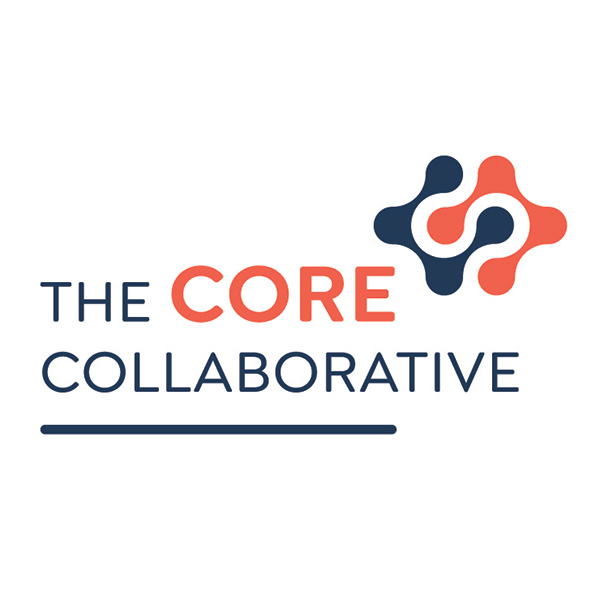In today’s classrooms, fostering student agency is more important than ever. One powerful way to do this is through goal setting. When students set their own goals, they take ownership of their learning, which empowers them to become active participants in their educational journey. Read on to explore how goal setting can strengthen student agency, drawing on Dr. Gholdy Muhammad’s work (2020) on learning pursuits and the importance of connecting student goal setting to strengthen your Multi-Tiered System of Supports (MTSS) model.
 The Power of Goal Setting in Strengthening Student Agency
The Power of Goal Setting in Strengthening Student Agency
Student agency refers to the capacity of students to act independently and make choices about their learning. When students set goals, they define their own learning path, which enhances their sense of control and responsibility. This practice shifts the focus from teacher-driven instruction to student-centered learning, where students become co-creators of their educational experiences.
Goal setting encourages students to reflect on their strengths, challenges, and areas of interest. It also helps them develop important skills such as self-regulation, time management, and perseverance. When students see the progress they make toward their goals, they experience a sense of accomplishment, which boosts their confidence and motivation.
Dr. Gholdy Muhammad’s Learning Pursuits
Dr. Gholdy Muhammad, in her work on culturally and historically responsive education (2020), emphasizes the importance of learning pursuits—intellectual pursuits that help students develop identity, skills, intellect, and criticality. When student’s Goal setting aligns seamlessly with these pursuits, particularly in fostering students’ identities as learners and thinkers.
Setting goals based on Dr. Gholdy Muhammad’s equity framework (2020) involves aligning student aspirations with the four key pursuits identified in her model: Identity, Skill, Intellectualism, and Criticality. Here’s how a learner can set goals using this framework:
1. Identity
- Goal Setting: Students should reflect on their own identity, including their cultural, historical, and lived experiences. The goal could involve exploring and expressing this identity through their learning.
- Example Goal: “I want to write a personal narrative that reflects my cultural background and share it with my class.” “I want to develop reflection so I am more self aware.” “I want to develop my peer feedback practice so I am more socially aware and empathetic.”
2. Skill
- Goal Setting: Focus on specific academic skills that the student wants to develop. Screener data can help clarify this along with other evidence. These could be related to literacy, numeracy, communication, math practices, science and engineering practices, or any other area of study.
- Example Goal: “I aim to improve my summarizing skills by: 1) learning to paraphrase, 2) infusing expert words when I am summarizing and 3) clarifying the most important details so I am more clear and concise. I will also seek feedback from my peers and teacher.”
3. Intellectualism
- Goal Setting: Encourage students to engage deeply with content (standards) that challenges their thinking and broadens their understanding. Goals in this area might involve pursuing topics of interest concerning content goals or pushing themselves to think critically.
- Example Goal: “I will research the history of my community and present my findings to the class, focusing on how historical events have shaped our current society.”
4. Criticality
- Goal Setting: This involves developing the ability to analyze and critique social and cultural issues, encouraging students to become active participants in social justice.
- Example Goal: “I want to learn more about environmental justice and take action by organizing a school-wide recycling program.”
Steps for Students to Set Goals Using the Framework
- Self-Reflection: Start by reflecting on what each of these pursuits means to them personally. What aspects of their identity do they want to explore? What skills do they want to develop? What intellectual interests do they have? What social issues matter to them?
- Identify Specific Goals: Encourage the student to set specific, measurable, achievable, relevant, and time-bound (SMART) goals for each pursuit.
- Connect Goals to Learning Activities: Help students identify how these goals can be integrated into their current learning activities or projects. For example, if a student is working on a history project, they might set a goal to include a critical analysis of how historical narratives have marginalized certain groups.
- Reflect and Revise: Periodically, students should reflect on their progress and adjust their goals as needed. This could involve adding new goals as they understand each pursuit or refining existing ones.
- Celebrate Successes: Recognize and celebrate when students achieve their goals, particularly when they make meaningful connections between their learning and their identity, skills, intellectual pursuits, and critical understanding of the world.
By setting goals using this framework, students can engage in a more holistic and culturally responsive approach to learning that nurtures their development as learners and as individuals within their communities.
If an entire learning community united around the power of goal setting and learning pursuits, they would create a collective force of unstoppable growth, where every member’s dreams are nurtured, amplified, and realized together.
Personal Growth Matters
When students set goals, they are engaging in a pursuit of self-awareness and growth. They identify what matters to them, which in turn shapes their learning identity. By setting goals related to their academic, personal, and social development, students can connect their learning to their cultural and historical contexts, making their learning experiences more relevant and meaningful.
Encouraging students to set specific, measurable, achievable, relevant, and time-bound (SMART) goals strengthens a variety of skills that are essential for personal and academic growth. These skills include self-regulation, motivation, decision-making, focus and attention, perseverance and resilience, self-awareness, executive functioning, accountability, and communication. These skills collectively contribute to overall personal development, academic achievement, and life-long learning, making goal setting a crucial practice in all aspects of life.
SMART goals guide students in acquiring the knowledge and abilities they need to succeed academically and beyond. As students reflect on their progress, they also develop criticality—the ability to question and analyze their learning process, leading to deeper understanding and self-empowerment. When Impact Teams-PLCs create rituals and routines for student goal setting, they ignite a fire within them – a fire that fuels their dreams, drives their determination, and illuminates the path to their boundless potential. If an entire learning community united around the power of goal setting and learning pursuits, they would create a collective force of unstoppable growth, where every member’s dreams are nurtured, amplified, and realized together.
The Role of Goal Setting in the MTSS Model
The Multi-Tiered System of Support (MTSS) is a framework designed to provide targeted support to students based on their individual needs. Connecting goal setting to the MTSS model ensures that all students, regardless of their starting point, can engage in meaningful learning experiences that are relevant and important for their personal growth (Bloomberg & Pitchford, 2023).
In Tier 1 of the MTSS model, where all students receive high-quality instruction, goal setting can be used as a universal strategy to promote student agency. Teachers can work with students to set personal and academic goals using screener data and other sources of evidence by integrating goal-setting rituals and routines into daily and weekly instruction. This practice helps create a culture of goal-oriented learning in the classroom.
For students who require additional support in Tier 2, goal setting can be tailored to address specific areas of need. Students should be clear about their goals and be given the opportunity to reflect on their goals and progress. Teachers and support staff can collaborate with students to set goals that target their unique challenges, such as improving reading comprehension, problem solving, or developing social-emotional skills. By focusing on individualized goals, students receive the support they need to succeed while also building their agency.
In Tier 3, where students receive intensive, individualized support, goal setting becomes even more critical. These students often face significant barriers to learning, and setting realistic, achievable goals can provide them with a clear path forward. By involving students in the goal-setting process, educators can help them take ownership of their learning journey, fostering a sense of agency and self-efficacy.
Goal Setting is a Transformative Act
Setting goals with students is more than just a strategy; it’s a transformative act that can ignite their potential and reshape their educational journey. When we empower students to take charge of their learning through goal setting, we’re handing them the keys to their future, allowing them to become the architects of their own success. Connecting this practice to Dr. Gholdy Muhammad’s powerful equity framework (2020) ensures that students’ goals are not just academic checkpoints, but deeply personal milestones that resonate with their identities and aspirations.
Here are five different activities to support students in developing goals or learning pursuits:
1. Vision Board Creation
Objective: Help students visualize their goals and learning pursuits.
- Activity: Provide students with magazines, newspapers, and online resources to find images, words, and quotes that resonate with their personal and academic aspirations. Have them create a vision board that represents their goals, dreams, and the steps they believe will help them achieve these. Once completed, students can present their vision boards to the class, explaining the significance of each element and how it relates to their goals.
- Outcome: Students understand their goals better, and the visual representation reinforces their commitment to these pursuits.
2. SMART Goal Setting Workshop
Objective: Teach students how to set specific, measurable, achievable, relevant, and time-bound (SMART) goals.
- Activity: Conduct a workshop where students learn about the SMART criteria. After discussing each component, guide them through the process of setting at least one academic and one personal goal using the SMART framework. Encourage them to share their goals with a partner for feedback and refinement.
- Outcome: Students learn how to create actionable goals that are realistic and time-bound, increasing the likelihood of success.
3. Learning Pursuit Journals
Objective: Encourage reflection on learning goals and personal growth.
- Activity: Provide students with journals dedicated to their learning pursuits. Each week, have students reflect on their progress toward their goals by writing about their experiences, challenges, and successes. Include prompts such as, “What did I learn this week that brings me closer to my goal?” and “What obstacles did I face, and how did I overcome them?”
- Outcome: Regular reflection helps students stay engaged with their goals, track progress, and develop resilience and self-awareness.
4. Peer Goal-Setting Circles
Objective: Foster collaboration and accountability in goal setting.
- Activity: Organize students into small groups or circles where they can discuss their goals and learning pursuits. In each session, students take turns sharing their goals, providing updates, and receiving feedback from peers. The group can offer suggestions, and encouragement, and hold each other accountable for making progress.
- Outcome: The collaborative environment promotes a sense of community, supports goal achievement, and helps students feel responsible for their own and others’ success.
5. Goal Achievement Celebration
Objective: Reinforce the value of setting and achieving goals.
- Activity: Set up a regular schedule (e.g., monthly or quarterly) to celebrate students’ progress toward their goals. This could include a special event where students present their accomplishments, share the strategies that worked for them, and reflect on how achieving their goals has impacted their learning and growth. Recognize and reward the effort and resilience of all students, not just those who achieve their goals fully.
- Outcome: Celebrating achievements, big and small helps build a positive classroom culture where goal setting is valued and perseverance is recognized. It also motivates students to continue setting and striving for new goals.
Let’s Fuel Our Students’ Dreams
Every goal set and achieved is a step toward a brighter, more empowered future for our students. Let’s commit to walking alongside them on this journey, fueling their dreams, and celebrating their successes. In doing so, we create not just learners, but leaders—capable, confident, and ready to make their mark on the world.
PS: Read more about how Impact Teams-PLCs set SMARTIE Goals and Mastery Goals at the launch of each school year.
Sources:
Bloomberg & Pitchford. (2023). Leading Impact Teams: Building a Culture of Efficacy and Agency. Mimi & Todd Press.
Muhammad, G. (2020). Cultivating Genius: An Equity Framework for Culturally and Historically Responsive Literacy. Scholastic Inc.
Muhammad, G. (2022). Unearthing Joy: A Guide to Culturally and Historically Responsive Teaching and Learning. Scholastic Inc.
As students and teachers experience success, their belief in their abilities strengthens, leading to enhanced engagement and progress across all areas of learning. Join our learner-centered PLC community where we put students in the driver’s seat. Are you ready to fuel your students’ dreams?
Fuel Students' Dreams


